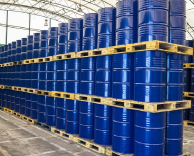Transformer Oil Filtration Systems Explained: Your Key to Energy Reliability.
Introduction
In the world of electrical power distribution, transformer oil plays an essential role in ensuring the safe and efficient operation of transformers. However, over time, transformer oil can become contaminated with moisture, particles, and gases, which can degrade its insulating properties and impact the overall performance of the transformer. Transformer oil filtration systems provide a vital solution to maintain the reliability of transformers by keeping the oil clean, dry, and free from impurities. This comprehensive guide will explore everything you need to know about transformer oil filtration systems, their benefits, types, processes, and applications across industries.

Understanding Transformer Oil Filtration
Transformer oil filtrationremoves contaminants, such as water, dissolved gases, particulate matter, and acids, from transformer oil. These contaminants can negatively affect the transformer’s performance, insulation properties, and lifespan. Over time, transformer oil can become degraded due to various factors, including high temperatures, electrical arcing, and chemical reactions with materials inside the transformer. By utilizing a transformer oil filter system, operators can restore the oil to its optimal condition and ensure that the transformer remains functional for a longer period.
Key Benefits of Transformer Oil Filtration Systems
Transformer oil filtration systemsoffer several critical benefits that contribute to the long-term reliability and efficiency of transformers. These benefits include:
- Improved Insulation Efficiency
- Extended Transformer Lifespan
- Enhanced Reliability
- Cost Savings
- Compliance with Industry Standards
The primary function of transformer oil is to provide insulation between the internal components of the transformer. Contaminated oil loses its insulating properties, leading to an increased risk of electrical failures. Transformer oil filtration machines remove moisture, particles, and gases from the oil, restoring its insulating efficiency and preventing short circuits and breakdowns.
By maintaining the cleanliness and purity of the transformer oil, these filtration systems prevent the accumulation of contaminants that can accelerate the aging process of the transformer’s internal components. This extends the overall lifespan of the transformer, reducing the need for costly replacements and repairs.
Transformer failures can result in significant downtime and costly repairs. Regular filtration of the oil minimizes the risk of such failures by keeping the oil in optimal condition. This ensures the transformer operates at full capacity, reducing the likelihood of operational disruptions and improving system reliability.
TBy preventing transformer failures and extending the lifespan of the equipment, transformer oil filtration systems offer significant cost savings. The need for expensive repairs, replacements, and maintenance can be greatly reduced, resulting in lower operational costs over time.
Regular filtration of transformer oil helps organizations comply with safety and environmental regulations by ensuring the oil is free from hazardous contaminants. This is particularly important in industries where transformers operate in sensitive environments and must meet strict standards for health, safety, and environmental protection.
Types of Transformer Oil Filtration Systems
There are various types of transformer oil filtration systems designed to meet specific needs and conditions. The choice of system depends on the level of contamination, the type of transformer, and the desired maintenance schedule.
- Offline Transformer Oil Filtration Systems
- Online Transformer Oil Filtration Systems
- Vacuum Oil Filtration Systems
- Centrifugal Oil Filtration Systems
- Coalescer and Separator Filtration Systems
Offline filtration systems operate when the transformer is not in service. The oil is pumped out of the transformer and passed through a transformer oil filter machine that removes moisture, particles, and other contaminants. This process can be done periodically, allowing operators to perform routine maintenance without interrupting the transformer’s operation.
Unlike offline systems, online filtration systems operate while the transformer is in service. These systems continuously filter the oil as it circulates through the transformer, ensuring that the oil remains clean and free from contaminants at all times. Online systems are ideal for critical transformers that require constant operation and minimal downtime.
Vacuum filtration systems use a vacuum to remove dissolved gases and moisture from transformer oil. The oil is subjected to low pressure in a vacuum chamber, causing the contaminants to evaporate and separate from the oil. This type of filtration is highly effective in removing both free and dissolved moisture, as well as gases that can affect the transformer’s performance.
Centrifugal filtration systems utilize high-speed rotation to separate solid contaminants from the oil. The centrifugal force causes particles to move outward, where they are collected and removed. This type of system is particularly effective for removing larger particles and sediments from the oil.
Coalescer and separator systems are designed to remove water from transformer oil by separating the water droplets from the oil. Coalescers attract water molecules, causing them to form larger droplets, which can then be easily separated from the oil. These systems are ideal for transformers operating in environments where water contamination is a significant concern.
Step-by-Step Process of Transformer Oil Filtration
The process of transformer oil filtration generally follows these key steps:
- Oil Sampling
- Pumping the Oil
- Filtration
- Oil Reconditioning
- Reintroducing the Oil
Before filtration begins, a sample of the transformer oil is taken to assess its condition. This step helps determine the level of contamination and guides the selection of the appropriate filtration method.
The oil is pumped out of the transformer and into the filtration unit. For offline systems, this may involve shutting down the transformer temporarily to allow the oil to be processed.
The oil passes through the filtration media, where contaminants such as moisture, particulate matter, and gases are removed. The filtration unit may use various methods, including vacuum, centrifugal, or coalescer filtration, depending on the specific requirements.
Once the contaminants are removed, the oil is reconditioned to restore its insulating properties. This may involve adding additives or conducting further treatments to enhance the oil’s performance.
After the oil has been filtered and reconditioned, it is returned to the transformer, ensuring that the equipment is operating with clean, high-quality oil. The system may then continue to monitor the oil’s condition to maintain its optimal performance.
Applications Across Industries
Transformer oil filtration systems are widely used across various industries where transformers play a critical role in power generation and distribution. These include:
- Power Generation
- Oil and Gas
- Industrial Manufacturing
- Renewable Energy
In power plants, transformers are essential for stepping up or stepping down voltage for efficient electricity transmission. Transformer oil filtration machines ensure that these transformers operate reliably, minimizing the risk of power outages and maximizing energy output.
The oil and gas industry relies on transformers to support electrical infrastructure in remote locations. Oil filtration transformers are critical in ensuring that transformers in these challenging environments remain functional and safe.
Manufacturers use transformers to power machinery and equipment in large industrial facilities. Maintaining transformer oil quality is crucial for minimizing downtime and ensuring continuous production processes.
With the increasing adoption of renewable energy sources, transformers are used to manage energy from wind turbines, solar panels, and other green technologies. Transformer oil filtration ensures that these critical systems operate without interruptions, improving the overall efficiency of renewable energy production.
Maintenance and Services for Transformer Oil Filtration Systems
Regular maintenance and servicing of transformer oil filtration systems are essential to ensure they continue to perform optimally. This includes routine checks, oil sampling, and filter replacement to keep contaminants at bay. Some manufacturers, such as Minimac, offer comprehensive services to monitor and maintain transformer oil filtration machines, providing peace of mind for organizations relying on these critical assets.
Why Choose Minimac Transformer Oil Filtration Systems?
Minimac offers cutting-edge transformer oil filtration systems designed for optimal performance and reliability. With a focus on quality, safety, and customer satisfaction, Minimac’s systems provide the ideal solution for maintaining transformer oil purity across a wide range of industries. The company’s innovative designs ensure that transformers remain operational with minimal downtime and maintenance costs, making them a trusted choice for businesses worldwide.
Choosing the Right Transformer Oil Filtration System
Selecting the right transformer oil filtration system depends on several factors, including the type of transformer, operating environment, and specific filtration needs. It’s essential to consult with experts to ensure the right system is chosen for your application, helping you achieve the best possible results in terms of efficiency and reliability.
Transforming Energy Reliability Through Maintenance Best Practices
To ensure that transformer oil filtration systems continue to deliver reliable performance, it’s crucial to implement best maintenance practices. Regularly monitoring the oil’s condition, performing scheduled maintenance, and promptly addressing any issues can significantly enhance the reliability of your transformers and contribute to the overall stability of your energy infrastructure.
Conclusion
In summary, transformer oil filtration systems are a vital part of maintaining the reliability, efficiency, and lifespan of transformers. By keeping transformer oil clean and free from contaminants, these systems ensure that transformers operate smoothly, minimizing the risk of costly breakdowns and improving overall energy reliability. Choosing the right filtration system and maintaining it properly is crucial for achieving optimal performance. At Minimac, we offer industry-leading transformer oil filtration solutions that meet the highest standards for safety, efficiency, and reliability.
FAQs:
- Oil Sampling – Assessing contamination levels.
- Pumping the Oil – Transferring oil to the filtration unit.
- Filtration – Removing contaminants through various methods (vacuum, centrifugal, coalescer).
- Oil Reconditioning – Restoring insulating properties.
- Reintroducing the Oil – Returning clean oil to the transformer.
- Preventive Maintenance – Routine inspections and filtration to avoid issues.
- Predictive Maintenance – Monitoring oil and transformer conditions to predict failures.
- Corrective Maintenance – Addressing faults or failures to restore functionality.
- Dielectric Strength Test – Measures insulating capability.
- Moisture Content Test – Detects water levels.
- Dissolved Gas Analysis (DGA) – Identifies gases indicating faults.
- Acidity Test – Assesses chemical degradation.
Click here to learn more about Minimac Systems Transformer Oil Filtration Systems:
https://www.minimacsystems.com/transformer-oil-filtration-system
Contact us today to learn how the Minimac Systems Transformer Oil Filtration Systems TOFS can transform your lubrication practices and ensure the success of your operations!





